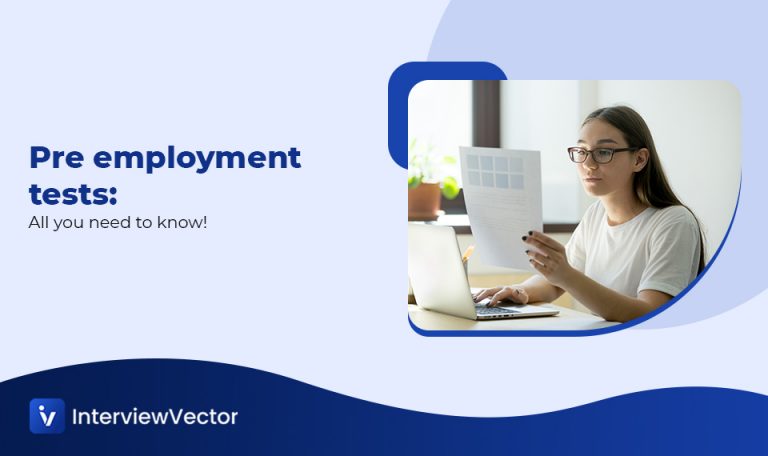Introduction
Online tests and live remote proctoring have become essential for professional and educational development in the age of rapid technical breakthroughs and environmental concerns. They allow organizations to maintain honesty and inclusivity across boundaries. Comprehending the subtleties of these digital solutions as we navigate these changes is crucial to creating a world that is prepared for the future.
Online remote proctoring, which provides unprecedented accessibility and ease, has emerged as the foundation of contemporary educational and hiring procedures. Whether you’re a professional taking a certification test or a student getting ready for an exam, knowing how live proctoring operates and what to anticipate will help the process go more smoothly.
Here is all you need to know about online remote proctoring software.
What is remote proctoring?
Remote proctoring is the process of monitoring either manually or via Artificial Intelligence or both, a candidate. It is done to ensure that the candidate is not involved in any unfair/cheating practice while taking the test. This type of proctoring is introduced to ensure the sanity of the attempted test and allows organizations to maintain honesty and inclusivity across boundaries. Through live remote proctoring, candidates can take tests or assessments remotely under online supervision. Employing technology to monitor applicants during tests or interviews to stop cheating guarantees honesty.
Institutions can record audiovisual data and monitor test-takers in real time using webcams, microphones, and screen sharing. Artificial intelligence can identify questionable actions, including averting one’s gaze from the screen, conversing with someone, or using unapproved resources. It helps remote proctoring systems identify inconsistencies by studying applicants’ movements.
With live remote proctoring, candidates can take tests from any location under the supervision of live invigilators or software. This method accommodates candidates’ desire for flexibility while maintaining the test’s integrity.
There are typically three types of remote proctoring:
- Live remote proctoring: A human invigilator monitors candidates in real-time via a webcam.
- AI proctoring: AI proctoring systems track suspicious behavior like eye movement, background noise, or unauthorized activities.
- Recorded proctored exam: Sessions are recorded and reviewed later by human proctors or AI tools.
How does remote proctoring work?
Online proctoring software verifies online test-takers’ identities while detecting and deterring academic misconduct. The tool ensures multi-factor biometric authentication upon entry. Below mentioned is a standard process:
Preparation
Candidates need to install special software on their devices before the exam. This software helps monitor them during the test. They permit the software to access their webcam, microphone, and screen and monitor their actions.
Monitoring in real time
The software starts as soon as the test begins. It records voice using the microphone and video using the webcam, monitoring the students’ tasks throughout the exam. During online remote proctoring, recording audio, video, or both gives the proctor useful footage to review and clear up any doubts.
Finding anomalies
The software analyzes the data it gathers in real time using intelligent algorithms. It searches for any odd behavior that would indicate infidelity. Assume, for instance, that a candidate is constantly averting their eyes from the screen or conversing with someone else. The software alerts the proctor by raising a flag in the scenario.
Follow up after the exam
Once the exam has concluded, the educators can review the footage to identify suspicious behavior and flag potential cheaters.
The role of technology
Remote proctored exam relies heavily on technology to ensure fairness and security. Key features include:
- Facial recognition: Confirms the candidate’s identity throughout the test.
- Behavioral analysis: Detects unusual patterns, like constant shifting or unauthorized devices in the room.
- Browser lockdown: Prevents candidates from opening other tabs, apps, or windows during the test.
While these tools improve security, they also require a stable internet connection and a functioning device, so ensure your setup is ready.
Use of online remote proctoring software in organizations
Every business must have a recruitment procedure in place, and many rely on it for their entire success. Recruiters go above and beyond to ensure they invest their time in the proper person to build winning teams. What can recruiters gain from attracting the ideal candidate? That is every recruiter’s desire. Well, online tests are the solution! Conducting pre-employability tests online makes reaching out to numerous candidates without regard to location or distance possible.
Businesses can also use remotely proctored internal staff exams for various objectives, including training on new products or services or increment assessments.
How can cheating be avoided in remote internet-proctored tests?
Numerous techniques are available through online remote proctoring services to identify and stop cheating during an online test, such as:
Recognition of faces
Certain online remote proctoring services use facial recognition technology to verify that the test taker is the same person who enrolled for the test.
Analysis of mouse movements
This system monitors the exam taker’s mouse movements to identify tendencies that might indicate cheating.
Detection of audio
Background noise or numerous voices are also monitored to stop anyone in the room from assisting the test-taker.
Webcam surveillance
The exam taker’s webcam is continuously monitored, either manually by a proctor or automatically by an AI, to identify any questionable activity. This can involve spotting the usage of forbidden materials, like notes or textbooks, as well as spotting suspect behavior, including a prolonged period of time spent away from the screen or the exam taker leaving the camera view.
Observation of the taker’s screen
Throughout the test, the examinee’s computer screen is carefully watched for unusual activity, such as the use of forbidden materials.
Recording
The exam session is often recorded, which the proctor can review later to ensure that no cheating occurred.
What are the advantages of a remote online proctored exam?
Adaptability
While maintaining academic integrity, an online remote proctored exam enables participation from anybody, anywhere. With live remote proctored exams, the instructor can carry out their responsibilities as a supervisor from any location or without physically being there. Students can save time and money by taking an online proctored test instead of going to a physical site, keeping the school money on travel expenses and investments, and setting up physical test centers.
Fair testing atmosphere
All candidates can test in an equitable setting with a remote proctored exam. They are assured of the continued value of institutions, and the institution’s reputation is safeguarded by preventing and discouraging academic dishonesty or cheating.
Enhanced protection
Online remote proctoring ensures the security and integrity of the test by discouraging and preventing cheating through the use of A “and auto” action, online “in-person” proctoring, or a combination of both. Concerns about academic dishonesty during an online exam have been resolved. The same level of safety as on campus is now available for both low-stakes and high-stakes testing.
Convenient and economical
Because physical testing facilities or proctors are not needed, remote tests result in far lower administrative costs for universities. Test-takers additionally benefit from the remote setting because they can write them from anywhere and don’t have to pay for transportation to and from the testing site.
What are the factors driving the growth of online proctoring?
- Demand due to the growth of remote working
- Elimination of high costs of proctored learning centers
- Save learners’ time and money.
- There is not enough infrastructure or computer labs to administer exam-condition environments.
- Increasing focus on work-based apprenticeships and the alignment of learning and assessments to actual organizational needs
Considering the current global scenario, where more and more institutes are opting to digitize various processes, online proctoring is seeing an increase in its usage worldwide.
Key features to consider when choosing a live remote proctoring tool
Integration with any current assessment engine is quick and simple. The majority of solutions on the market require you to execute the proctoring service as a parallel program or use their assessment engine.
The platform’s stability is essential. Glitches may impact candidate performance in online proctoring, which includes desktop sharing, video streaming, and other capabilities.
If you choose a tool that is only utilized in the United States, it may not function properly in other regions with low hardware quality and internet speed.
More automation is preferable. Contemporary technology can make online proctoring incredibly effective. For further information, see the final section, which discusses the future of live proctoring.
Excellent reporting capabilities will help you monitor test-taker experience and efficiency metrics and make the initiative a success.
Final thoughts
Online remote proctoring has redefined how exams are conducted, offering flexibility and convenience without compromising security. By understanding the process, preparing thoroughly, and addressing any concerns beforehand, one can confidently navigate their remote proctoring experience.
Click here to learn how InterviewVector can simplify online proctoring with our remote proctoring services!














